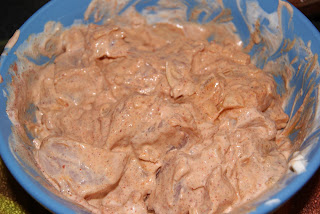Sausage savoury pastry, commonly known as Sausage Roll is extremely popular in the bakeries and sandwich shops across the UK Britain
Ingredients:
340g puff pastry
4 leans slices of bacon
4 Sausages
1 red onion- sliced thinly
50g grated cheddar cheese
Oil- for frying
Egg- for brushing
Method:
- In a frying pan, fry the bacon and sausages in oil until light brown on low heat.
- Fry the onions until translucent.
- Roll out the puff pastry (approx. 3-5 mm thick) and cut into sauces size circle.
- Wrap a sausage in a slice of bacon and place in the middle of puff pastry circle. Sprinkle with onions and cheddar cheese.
- Pick up one side of the pastry and fold to the centre. Brush with egg and fold over the other side. Brush with egg all over to give your sausage rolls a nice glaze.
- Place on greased baking tray and bake for 20-25 minutes at 180C until golden brown. Enjoy!
TIPS:
You were never able to try a sausage roll, because of halal or vegetarian diet. It’s not a problem anymore! You can easily change this recipe to create a delicious snack, suitable for you. I was always stuck to cheese and onion pastries until I’ve learnt to make these sausage rolls at home. For my halal sausage rolls I use sausage shaped kebabs, instead of bacon and sausages. They add more flavours to the snack due to various spices used and also you can experiment with different meat: chicken, lamb, goat, etc. You can also use different spices to marinade the meat. Here is a quick reminder of our best recipes: Sheekh kebabs, Chicken Koftas and Meatball curry. Simply shape a long, sausage-like kebab and prebake it in the oven at 180C, until golden brown. This will assure you the meat is cooked properly and also help to get rid off excess fat from the meat.
If you are vegetarian you can buy meat-free sausages in the supermarket and use them instead. They are usually made of soya and vegetables and they are very healthy and tasty alternative for traditional sausage.
To add more flavours to this tasty party snack I also upgrade the recipe by adding other type of cheese. My favourite is Red Leicester, but you can adjust it to your own preferences. Enjoy!
























